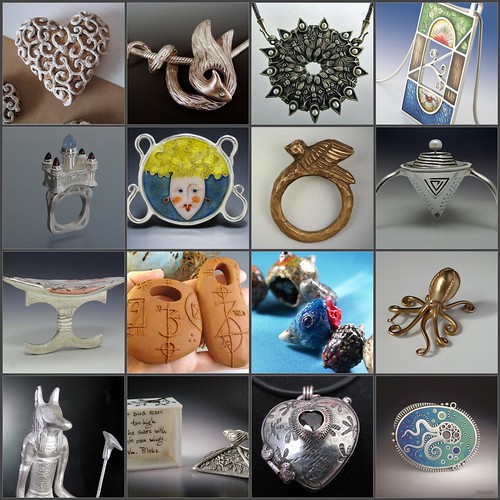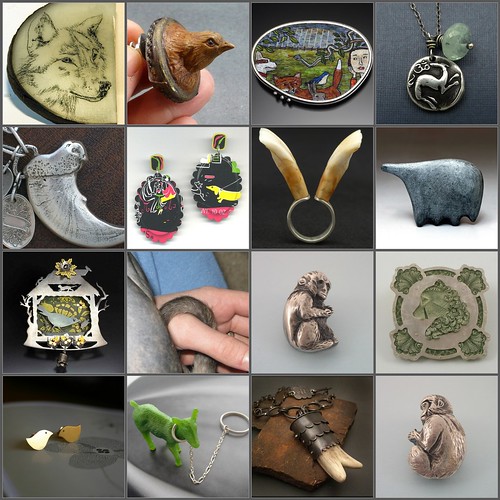One of the rings broke in the greenware state and I fixed it by gently spreading the break open and applying some very thick home made slip into the crevice. I pressed the two sides back together and left the excess in place. Didn't smooth after it was dry, didn't sand it away, didn't do any more reinforcement. I wanted to see if such a quick repair would hold. Then before firing I quickly sanded all rings with green; 400 grit; 3M polishing paper, poured 1/2 inch of mystery carbon into my Hadar Jacobson home made fiber blanket box, set the rings in lightly, put another 1/2 inch of carbon topped with another piece of fiber blanket (to act as a lid), set the kiln to a fast ramp to 1420 for 1 hour and went to watch reruns of Miami Ink. When the buzzer went off that indicated the firing was done - I picked up a kitty or three and snuggled until I went to bed. Taking PRO out of the kiln while still hot would create oxidation and I wanted to avoid that.
Got up this morning all excited and everything, went to the kiln and pulled my hand back in surprise. Still Hot!! Who'd a thunk? Well - I just couldn't stand to be patient one minute longer and used a tweezers to pluck the hot rings out of the carbon. While rooting around I realized that the carbon had totally burned to ash. Was it because I added a piece of fiber blanket on top? Fiber blanket is so heat retaining (which is what it's designed for) that the extra piece on top was overkill? Food for thought and more experimentation.
The oxidation was very easily removed with red 3M Radial Disks and I was glad to see that the color of PRO is lovely. I actually like it better than fine silver PMC. There were some surface sanding and maker's marks (fingernails must be trimmed on a regular basis) that I removed with a piece of the same green, 3M polishing paper loaded into a split mandrel/flex shaft. One of the rings did get flung across the room and has not come to light - but when the studio gremlins are done admiring it, I'm sure it will be returned.
When I re measured the ring sizes I came up with a size 4, 5.25, 6, 6.5 and 8. A pretty all around shrinkage of 4 sizes. The thinest area of the coil shrunk from 1.56 mm to .72 mm. And it's incredibly strong! Even my quick and dirty repair is as strong as Popeye.
My next experiment will be to make identical rings from PRO and PMC3. I've heard lots of complaints about the added expense of PRO, but I think that since it is stronger and you can make items thinner than we're used to - the cost per piece will be very comparable in the end. A ring made of PMC3 must be 5 cards or thicker to be strong and durable. A ring made of PRO seems to do just fine when only 3 cards thick. I may even try two cards just to see what happens.













